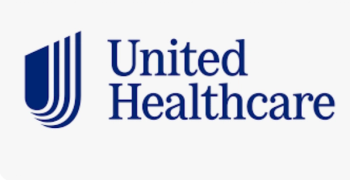
Online Provider Reviews: 4 Things Health Execs Need to Know
Here are ways healthcare providers could improve online ratings and better connect with their customers.
No one likes to be criticized. Let’s just get that out of the way.
But today, we live in a world full of criticism. At the bottom of this article, you can comment and say whatever you like. You can share this article with your colleagues, an implied endorsement of the content. You can give it a thumbs-up, or move on saying nothing at all.
I’m not going to get into the politics of online comments and reviews. Whether the idea is good or bad. Whether they’re real. Whether users should be able to make comments anonymously or sign their real name.
Because the fact is, reviews, comments, and emojis are here to stay.
Health insurance, hospital and physician review websites are extremely popular and regularly used by healthcare consumers. Those in the healthcare industry undoubtedly have a tangential awareness of these websites, however, few appreciate-or maybe it’s just simple reluctance to accept this unprecedented shift in power-this is now the status quo. And there’s no going back.
Many in healthcare are stuck in the 1900s to early 2000s when word of mouth was literally that. Reviews occurred but they were controlled by time, distance and personal associations. Viral meant something completely different.
Today, anyone with a connection to the Internet is a critic with unlimited “ink” and the opportunity to discuss the good, the bad and the ugly of healthcare with friends and strangers alike. If a negative comment goes viral, it really will make you sick.
- Accept what you can’t change
Online reviews are not a passing fad. Like it or not, they are here to stay. For many consumers, online reviews are the first place they turn for information, which is then used to inform their decisions. A U.K.-based company that specializes in helping organizations monitor online reviews found
While the U.K. company focused on “businesses” in general, not necessarily physician reviews, it’s important to accept that no one person, industry or business is immune from receiving online reviews. And, at the end of the day, medical practices, hospitals, surgical centers, and other healthcare facilities are local businesses, even when part of a larger organization.
To be sure, practicing medicine is nothing like buying a computer on Amazon. And while that’s true, it’s not. Consumers, healthcare or otherwise, judge the entire experience as a whole whether we like it or not. A
This attitude is rooted in the past. In fact, quality medical care does have much to do with wait times, bills, medical offices that don’t get prior authorizations settled before the patient visit, and rude or uncaring staff. Each issue can be repaired easily enough through staff education, improved operations and real-time digital connections to payers.
The paradigm, as they say, has shifted.
- Numbers don’t lie
Other industries-though they may not have entirely come to grips with citizen critics-understand customer service and care programs, and quick responses to critiques are the only way to counter negative reviews and promote the good ones. Healthcare, it seems, is not there. Yet.
This is especially evident in something called the
Related:
In 2016, the company that tallies the scores looked at 23 industries, including health insurance. Which didn't fare very well. The top score of 58 went to department stores, while health insurance companies scored 18.
At a recent medical conference, a presenter discussed Net Promoter Score numbers and audience members shook their heads and groaned in unison. They weren’t entirely happy about the prospect of having outsiders review their work. While providers have a vested interest in healthcare consumers, they have yet to connect the dots and understand that online community reviews and the often-discussed positive and negative experiences of patients have the opportunity to make or break their business.
A recent study by a
- The journey is the review
For many patients, a doctor’s appointment is much more than the brief amount of time spent with the physician. The experience during this healthcare journey-whether it’s hours, days, or months-can mean the difference between a positive and negative review.
A recent study by
Once again, the healthcare industry should look at the entire continuum of the patient’s medical journey. If the physical environment, desk staff, access to doctors, wait time, parking frustrations and problem resolution is outside the influence of the medical staff, just imagine how the patients feel. Instead of working to disassociate these challenges and medical treatment, the medical staff and administration should work closely to remedy these problems.
Rather than coming to terms with online ratings and addressing the issues that cause negative reviews and the fact healthcare consumers expect the entire experience to be, at the very least, pleasant, Mayo researchers instead suggest physician ratings be quantified using a different review instrument. “(T)hese online physician reviews are unstructured and not systematically designed to thoroughly review the physician-patient interaction on the entire patient experience and journey.”
The practice of medicine, however, is a journey. From the first time a patient books an appointment to when he or she pays a bill, the physician is a stop-albeit an important one-on that journey. And the entire journey must be coordinated and made as effortless as possible for the patient.
- Make yourself heard
Especially important is responding to all online reviews-positive or negative. Doing so demonstrates the healthcare provider cares that the patient is taking his or her time to provide a thoughtful evaluation of the service. In fact, 30% of consumers cite review responses as important when judging a local business, according to the U.K. survey.
No doubt some healthcare consumers use online reviews to satisfy a vindictive streak or are simply out to leave a bad review because they can. Some people are just ornery and unpleasant. And some reviews are completely fake. Nevertheless, it’s important to take all reviews seriously until veracity can be confirmed.
Healthcare providers who make themselves heard let patients know the comment has been read and understood. For many patients, just knowing that some acknowledged a comment is enough to make them happy.
Those who don’t stay current and continually evolve will get left behind. This is a significant issue in healthcare, which, as an industry, has yet to adopt a bricks-and-mortar or online retail model.
Related:
Physician offices are open traditional business hours, yet consumers can make online purchases at any time of the day or night and contact customer service reps or chat bots if questions arise. Healthcare providers may argue that they are not retailers, however, thanks to the internet consumers expect their activities and purchases to be consistent across all buying experiences. This includes healthcare, where consumers are certainly buying products and services.
The same Deloitte study that gauged how healthcare consumers initiated a search for a new healthcare provider, also found 31% wanted to connect with a live health coach 24/7 by text messaging to learn about nutrition and exercise. Separately, 35% want to connect with a virtual assistant to discuss symptoms with the goal of getting directed to a doctor or nurse.
While this shift is occurring slowly in some generations, for millennials, according to
Using current technologies, the traditional healthcare business could make changes and adjust to accommodate healthcare consumers. That’s why forward-thinking healthcare organizations join with online retailers or organizations with a deep understanding of how consumers use and interact with technology.
These are just a few of the ways healthcare providers could improve online ratings and better connect with their customers:
- 24/7 chat bots and virtual assistants designed to address emergent healthcare issues;
- Increased business hours, including early morning and after-work appointments;
- Online payments options;
- Participate in online physician rating web sites by responding to comments;
- Work with your internal social media team to understand how and when to respond; and
- Online chats with a doctor or a nurse in near real-time to accommodate patients who’d rather not drive to the doctor’s office.
These changes are already here and have become a reality with some healthcare providers. The change is happening, but slowly. (
Mark Miller is AVP of marketing, provider and health systems at
Newsletter
Get the latest industry news, event updates, and more from Managed healthcare Executive.





















































